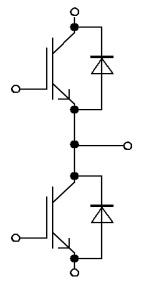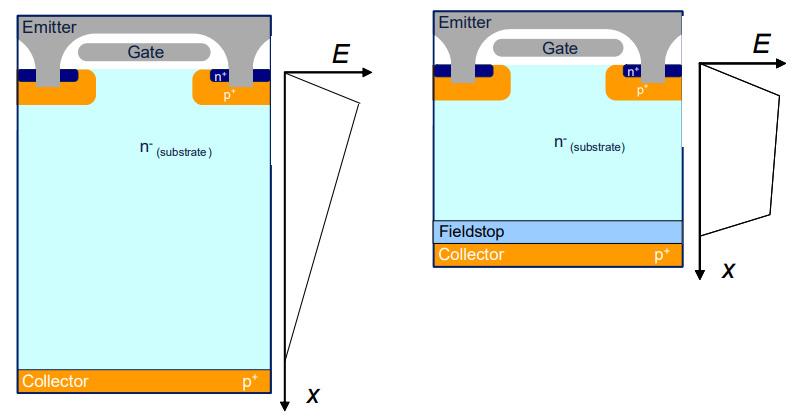Infineon Says New 4.5 kV IGBT Modules May Transform Transport Designs
Infineon has announced two new 4.5 kV IGBT XHP 3 modules, the FF450R45T3E4_B5 and DD450S45T3E4_B5.

One of the new XHP 3 modules. Image (modified) used courtesy of Infineon
Infineon developed the modules to simplify complex designs for industrial and commercial applications such as high-speed trains and conveyor belts.
New IGBT Modules Increase Isolation
Both devices are part of Infineon's XHP 3 lineup and share several core tenets. According to the product pages, both modules have high DC stability, high short-circuit capability, and a virtual junction operating temperature of 150°C. Both modules have improved isolation of 10.4 kV to ensure proper circuit operation in high-voltage conditions. The physical form factor of the modules is also small at 140 mm x 100 mm x 40 mm.

FF450R45T3E4_B5 is a dual-IGBT module. Image used courtesy of Infineon
While both devices are designed to work together, they are marked by several key differences. First of all, the FF450R (datasheet linked) is a 4,500 V, 450 A dual-IGBT switch module, while the DD450S (datasheet linked) is an IGBT diode module. The FF device features proprietary Trenchstop technology claimed to minimize switching losses and saturation voltage. According to the datasheet, the key features of the FF module include a high collector-emitter voltage (VCES) and high collector current (ICNom), making it especially suitable for high-power industrial applications such as high-speed rail.
Leveraging Trenchstop Technology
Trenchstop technology uses a field stop IGBT, characterized by a thinner wafer substrate and consequently lower resistance between collector and emitter. As a result, this technology reduces saturation voltage (VCES) and minimizes losses within the IGBT.

Trenchstop technology reduces saturation voltage. Image used courtesy of Infineon
Trenchstop technology has gained widespread acceptance in power electronics such as motor drives and power inverters. By combining the FF and DD devices together, customers can simplify conventional designs with multiple single switches/double diodes to two dual switches/double diodes.
By using double IGBT switches instead of multiple single switches, engineers can simplify busbar designs. A busbar is a strip of copper or other conductive metal used to distribute power to peripherals and other electrical components. When creating busbar power distribution systems, it's best to parallelize the IGBT connections to reduce loss and increase power. However, in such parallel connections using conventional IGBT switches, parasitic inductance can lead to current imbalance in a circuit.
The XHP family makes such parallel connections simpler and more robust by allowing system designers to place the connections side by side and reduce the amount of wiring.
Cost Saving for Industrial and Commercial Applications
Since the XHP family makes parallelized busbar designs easier, it can be used in a wide variety of high-voltage applications such as high-speed rail, conveyor belts, and locomotives. IGBTs are heavily used in locomotives, both electric and diesel-electric.

Traction control in locomotive system design. Image used courtesy of ResearchGate
One specific application that uses IGBTs is traction control systems. In such a system, a diesel engine may power an alternator that then drives electric motors connected to the wheels of the train. The voltages and currents switched in such an application may be very high, making them suitable for devices such as the XHP 3 lineup. According to a recent report, the global IGBT market is projected to reach $12.1B by 2030, indicating that demand for high-power, lower-loss IGBT devices such as the XHP family could continue to grow.





